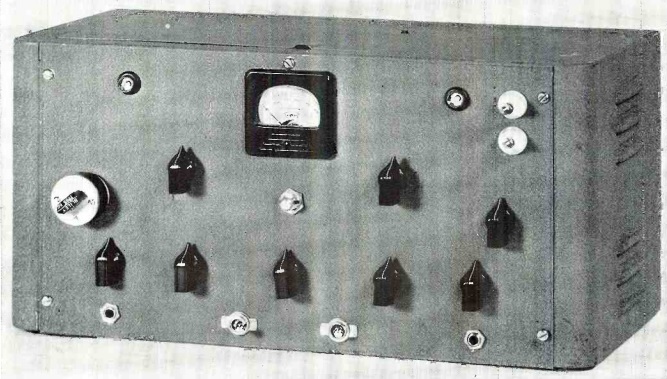 Seventy-five years ago this month, the March 1941 issue of Radio News carried the plans for the “Prairie Dog Special” transmitter, specially designed for Field Day or emergency use. The set was named after the Prairie Dogs, a Chicago area radio club, which had assembled a number of the transmitters, resulting in first place in the four transmitter category in the 1940 running of Field Day.
Seventy-five years ago this month, the March 1941 issue of Radio News carried the plans for the “Prairie Dog Special” transmitter, specially designed for Field Day or emergency use. The set was named after the Prairie Dogs, a Chicago area radio club, which had assembled a number of the transmitters, resulting in first place in the four transmitter category in the 1940 running of Field Day.
The transmitter covered 160 through 10 meters, and would put out about 24 watts on phone or 35 watts on CW. It had built-in power supplies for either AC or 6 volts DC, making use of a vibrator.
The circuit consisted of a 6V6G oscillator, with cathode keying for CW. The final amplifier was a HY60 tube, although the article noted that the venerable 807 could also be used. The modulator consiste of a 6C5 audio amplifier, followed by a 6V6 modulator. Two 6X5’s in the power supply did the rectification duties.
Portable operation required FCC notification, and the rules were somewhat complex:
A word about operation. The FCC regs specifically provide that portable operation can only be done on the week-end and then only on 48 hour’s notice to the Commission’s nearest office to your home QTH. Besides this the law provides that the transmissions MUST be from portable power sources. These are batteries, or some generator or another. The use of 155 v a.c. house lines even if they be strung out into a field is specifically prohibited; though a motor generator producing this voltage is not. So use your P.D. Special only on 115 v a.c. at home, or if in the field, then only from some motor-generator or battery. The provisions concerning reception are left open, and there is not any requirement that the receiver be battery or motor-generator powered.
The article’s author was Raymond Frank, W9JU.
Click Here For Today’s Ripley’s Believe It Or Not Cartoon
![]()

